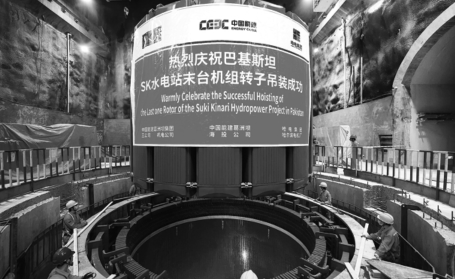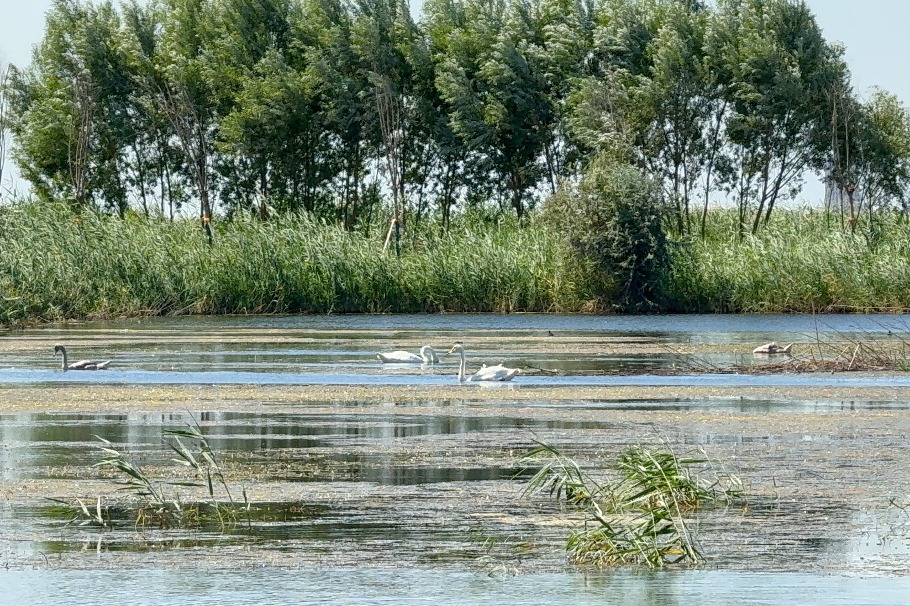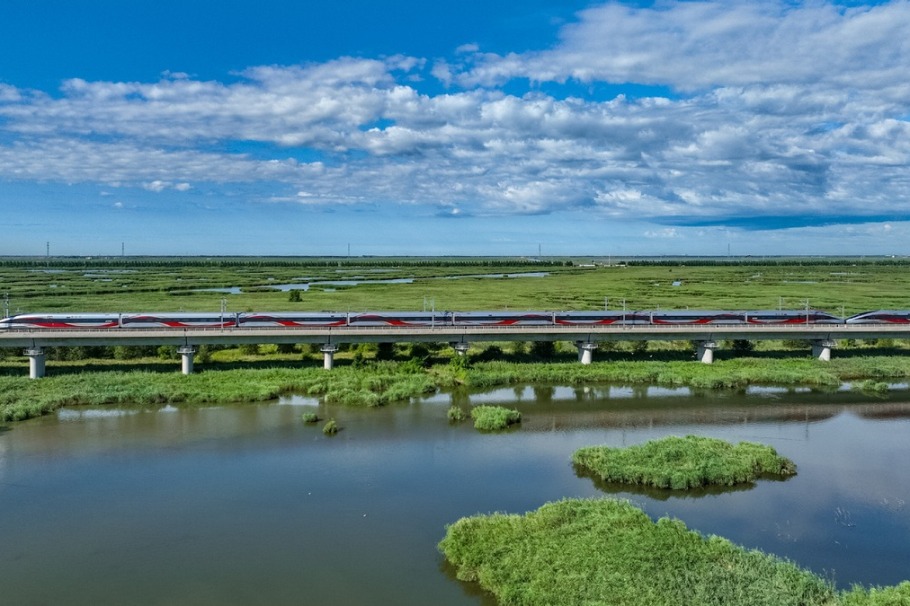CPEC helps Pakistan clear growth hurdles
Corridor lays foundation for economic development of locals, observers say

Energy projects constructed in the China-Pakistan Economic Corridor have helped alleviate bottlenecks restricting Pakistan's growth, and laid a solid foundation for economic development of local communities.
Of the 22 priority projects adopted for the first phase of the construction of CPEC, half are energy projects, according to Wang Shida, deputy director of the Institute of South Asian Studies of the China Institutes of Contemporary International Relations.
Energy infrastructure projects have been an important part of China-Pakistan cooperation on CPEC construction, Wang said.
"Through the joint efforts of the two countries, Pakistan's power generation capacity has been greatly improved, and the problem of insufficient power generation capacity has basically been solved," Wang said.
CPEC, which was launched in 2013, is a corridor that runs from Kashgar, China's Xinjiang Uygur autonomous region, to Gwadar Port in Southern Pakistan, featuring the construction of a number of infrastructure projects along the way.
Hu Hao, senior business manager of PowerChina Resources Ltd, said a coal-fired power plant co-developed by his employer in Southern Pakistan has provided "affordable and reliable electricity" for the locals.
The Port Qasim Coal-Fired Power Plant, located in Karachi by the Arabian Sea, is jointly developed and invested by PowerChina Resources Ltd and Qatar's Al Mirqab Capital, and is the first CPEC energy project with a third country involved, Hu said.
The power plant started commercial operation in April 2018. From 2019 to 2022, it contributed an average of about 7 percent of the whole of Pakistan's power supply annually, said Hu, who used to work in Pakistan for the project for more than six years.
Also, in October 2016, the project, which was under construction at the time, sent 100 Pakistani college graduates it had employed to undergo a six-month training in China, Hu said, adding that these people became "backbones" in Pakistan's power sector several years later.
"These stories are happening not only on this project but also on all CPEC projects," Hu said.
The Karot hydropower plant located on the Jhelum River is another CPEC energy project.
China Three Gorges Corporation, the developer of the hydropower plant which started commercial operation in June 2022, said the facility has a total installed capacity of 720,000 kilowatts, and can meet over 5 million locals' need for electric power.
"During the construction of CPEC projects, the Chinese government and enterprises have attached great importance to the livelihood and well-being of local people, which brought tangible benefits to the Pakistani economy and society," said Wang, of the China Institutes of Contemporary International Relations.
Eye-catching results
This year marks the 10th anniversary of CPEC, which is also a flagship project for Belt and Road cooperation. Over the past decade, the construction of CPEC has yielded eye-catching results, according to experts and officials.
The corridor has brought to Pakistan $25.4 billion of direct investment, 236,000 jobs, 510 kilometers of expressways, more than 8,000 megawatts of electric power and 886 kilometers of core transmission grids, Chinese Ambassador to Pakistan Jiang Zaidong said at a CPEC-related event in Islamabad in November.
In a report released in October 2022, China's National Bureau of Statistics said the 22 priority projects for the first phase of CPEC were basically completed, and that the corridor had entered into the second phase of construction in 2021.
Noting that CPEC has now entered a new stage of high-quality development, Wang said cooperation in industries will play the most significant role in the second phase of CPEC construction.
For Wang, such cooperation should cover a series of sectors, including the photovoltaic industry, mobile phone manufacturing, next-generation communications technologies and food processing.
He also said there is "huge potential" for agricultural cooperation under CPEC. "CPEC has laid a good foundation for Pakistan's industrialization, modernization as well as interconnection with other countries."
The corridor "is bound to become a key carrier" for China-Pakistan cooperation, where the two countries support each other in a "changing, and sometimes chaotic" world, he said.

Today's Top News
- No reason for Germany to let political expediency hurt relations with China
- Book on Xi's views on strengthening, revitalizing armed forces published
- China supports Ukraine peace talks between all parties
- China to hold press conference on military parade preparations
- Vast gap has to be bridged for peace to arrive in Europe
- AI powering China's industrial evolution





























